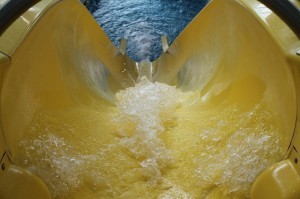Thanks to the huge Indian population in Singapore, there are numerous ways that you can celebrate the Festival of Light in the city. So if you want to celebrate this Indian tradition (it falls on 14th November this year), head on down to Little India and take part in some of the fun.
Enjoy the lights
Simply taking a walk along the streets of Little India is enough to see some beautiful displays of lights. The real focal point are the peacocks at the beginning of Serangoon Road, and if you want to see the lights at their best, hang around until 7pm when the sun goes down and the whole street becomes electrified. The lights will be on until midnight and will last for a little longer than the five days of the festival of light.
Enjoy some authentic Indian food
The Song Of India is offering a special menu for Diwali and you will be able to see why they have earned a Michelin star. The tasting menu has four courses, including an ‘art palette’ that has seven different tastings. If that is out of your budget, then head to any of the Indian restaurants that dot the streets in Little India for some deliciously authentic food.
Eat sweets until you feel sick
Indian sweets are addictive, sticky and sugary and once you start, you won’t be able to stop. Head over to Punjab Grill at Marina Bay Sands to buy their special Diwali sweet boxes. Look out for mango with white chocolate as well as green tea and pistachio. They also have plenty of dates and figs to celebrate without going into a sugar coma.
Singapore’s desire to be a city in a garden is no better exemplified than the spectacular Gardens By The Bay. It can be difficult to know where to start, so here is our quick guide to the best way to make sure you don't miss anything.
The gardens are divided into Bay Central Garden, Bay East Garden and Bay South Garden. Supertree Grove, the super-size man-made trees, are in the south garden. They are covered in trellises and are home to over 300 types of plants. Best seen at night, you can also take the Skyway, an aerial walkway that lets you walk among the canopies of the smaller supertrees. There is a particularly stunning light show, Rainforest Orchestra, which takes place at 7.45pm and 8.45pm.
In the south garden, you can also find The Cloud Forest and The Flower Dome. These work alongside the supertrees, and aim to project the vision of sustainability. Visiting the Cloud Forest means that you will come face to face with the Cloud Waterfall, which are over 35 metres high. Following the path, you can also see the different plant life found at different sea levels. The climate here replicated is that of Southeast Asia and South America, whereas the Flower Dome is more Mediterranean, as well as featuring the drier climates of Australia and South Africa. There is also a spectacular orchid display here, as well as flower arrangements which change with the seasons.
From here, head to the Heritage Gardens. This is a look at the diversity in Singapore, with Indian, Chinese and Malay gardens. There is also a water play area in the Far East Organization Children’s Garden, perfect for the humid summer months.
Where to find food on your walk
There are some food outlets at the Supertree Grove, but these are definitely catered to tourists. If you want something more local, head away from the Marina Bay Sands Hotel. You will eventually find Satay By The Bay, a fantastic hawker center with almost every type of food on offer.
You can arrive at the Gardens by taking the Circle and Downtown Lines, the nearest MRT station being Bayfront. The park is open from 5am- 2am and admission is free. Opening times and admissions for the conservatories and other attractions may vary. You can visit the website for more information.
Have you visited the Gardens by the Bay yet? What is the best attraction to see? Comment below with your experiences!
Wild Wild Wet
This is an especially good idea if you are travelling with children. They have built four new rides since October 2017 and this water park is a great day out for little and big kids alike. From the Kraken (a four lane mat slide) to the Torpedo, where you are ejected from a capsule eighteen meters in the air into a freefall, there is plenty to do for those who prefer to cool off in the water. They also have more gentle slides like the Royal Flush, Slide Up and Ular-Iah, which allows families to ride together. They even have rest zones where you can lie back and suntan. For little kids, there is a toddler’s play zone as well as a pool for babies. They have plenty of facilities for young families, such as nursing rooms, kid’s shower cubicles, baby carriers and even baby floats. A great choice for the whole family!
Go ice-skating
Whilst this sport may usually be reserved for winter months, it is also a great chance to cool off whilst enjoying a new sport. Thanks to it’s indoor location, you can also enjoy the air-conditioning! JCube Shopping Mall has a rink which also offers classes in figure skating, ice hockey, curling and speed skating.
Escape Rooms
Increasingly popular, and with plenty of options all over Singapore, these are a great indoor activity that means you escape the heat of the street. If physical exercise is not your bag, then some mental exercise might just do the trick instead. This is a great activity if you have a group of friends willing to take part, and it can be a lot of fun. Many escape rooms have different themes, such as solving crime or escaping from zombies. You can even try to escape from Aokigahara, Japan’s notorious suicide forest, or Alcatraz. Lost SG, Escape Artist, Lockdown, Escape Hunt and Trapped SG are some of the best.
Travelling to far-flung destinations can be exciting or daunting, depending on your frame of mind. But one thing is for sure, taking a little time to plan can make all the difference once the novelty wears off and the boredom sets in...
First of all, what a long-haul flight is requires some definition; technically, it is any flight that is over four hours, however, just to add to matters, it then falls into two different categories; medium long haul and ultra-long haul, the latter being a flight over eight hours. For example, a flight from London to Hong Kong totals around twelve hours making it ultra-long-haul. But it is not just the length of the actual flight that needs to be planned for, there is the journey to the airport, check in, security, boarding, immigration checks at your destination, reclaiming baggage and then your transfer to your final destination all adding hours to your total door to door time. We’ve put together some of our best tips to help you survive your long-haul trip!
Be kind to yourself. Reducing your stress levels the day before your trip can make a huge difference to your experience on the big day. Make sure you plan ahead and get everything ready in plenty of time to avoid those last-minute panics that stress everybody out; make sure you have located and checked all your documents in good time, why not treat yourself to a nice folder to keep your tickets, passports, visa information, insurance, emergency contact numbers, your travel itinerary and other relevant articles in. Then the day before you travel you will be able to do pleasant activities that relax you; don’t pull a 12-hour shift and leave your packing until the small hours of the morning.
Hand luggage and essentials ‘flight pack’.
Well thought out hand luggage can be a real gamechanger on a long-haul flight. Having the right items within easy reach can reduce stress and add to your comfort. Make sure you pack some extra layers of clothes to wear; cabin climate control can sometimes be on the chilly side and having spare clothes, or at least fresh underwear, to change into when you arrive will help you feel less dishevelled. Packing a little bag with essentials such as, comfort eye drops, toothbrush and toothpaste, tissues, flight stockings, painkillers, ear plugs, an eye mask, a small mirror, some make up, small pack of ‘freshen up’ wipes, hand cream, and antibacterial hand gel can go a long way to make your journey more comfortable, just pop it on top and everything will be within easy reach. Don’t forget to pack headphones, your phone, iPad or android tablet, (even in ‘flight mode’ these can help while away the hours). Don’t forget to install apps such as FlightAware which gives you updates on airport delays and flight delays, it can be set to send you notifications, weather updates, and maps your journey so you can see the route you will be taking. Being able to reduce boredom, stress, and anxiety is really useful, try using apps that use meditation techniques such as Calm, The Mindfulness App, Headspace, and Omvana are particularly useful when you're trying to sleep but find yourself distracted by noise, other people, or just the general goings on, alternatively, listen to music on Spotify, Google Play Music, or Apple Music apps to dull the drone of the plane engines. Downloading the kindle app on your phone or tablet means you can have a wide choice of reading material without adding bulk, or weight, to your hand luggage. Always download a few movies that you love because sometimes you just want to be brain dead and not have to follow a plot that requires any concentration, the movies may not be to your taste, and airplane screens can dry your eyes (hence the comfort eye drops in your essentials pack).
With steamy heat and the sun beating down, Singapore is the perfect place to enjoy some downtime by the side of a swimming pool. Now that the summer holidays are around the corner, what better excuse to take the family to one of the many complexes that Singapore boasts? Entry usually costs between 80 cents and S$3, and many have slides and water play. Here are some of the best in the city.
Jurong East Swimming Complex
This one is the largest in Singapore and it also has the best slides of all. There are three intertwined spiral slides as well as a wave pool with music. If you really want to cool off, try to stay near the rock caverns as they routinely spray water to resemble a storm. The complex offers plenty of shade and even jets to cool you down if it starts to feel too much. Tickets for a family of four are S$10 and remember to take spare change to use the lockers. Many of the rides are signposted with signs encouraging children to eat healthily and feature the calorie count of some of the nation’s best dishes. Some might be better not to look at! Jurong East Swimming Complex, 21 Jurong East Street 31.
Our Tampines Hub
Our Tampines Hub has recently been upgraded and offers a stunning rooftop pool, where the views over the city are unparalleled. They have six pools in total so you don’t have to worry about fighting for space, plus for those who want to relax, there is a jacuzzi. The children’s pool is garden-themed and has water fountatins, water guns and a mini waterfall. For those who are a little more serious about swimming, there is a huge eight lane training pool which is big enough to sail in. Our Tampines Hub, Level 6, 1 Tampines Walk
Splash @ Kidz Amaze
This is the first indoor water playground in Singapore and is specially geared towards kiddies. It is slightly pricier than the others and a family of four can cost S$28 for members. Expect to pay S$40 for non-members. You really get your money’s worth as you can play for hours here. There are multiple play zones, five water slides and an Enchanted Deep Sea. They also host kid’s birthday parties, for all ages. 9 Sentul Crescent, Punggol
Sengkang Swimming Complex
Another popular choice this swimming centre has plenty to entertain children of all ages. There are some huge water slides and even ones specially designed for little kids. Best of all, they have a huge bucket of water where you can drench your kids, or vice versa. For families with older children, there is a jacuzzi where you can relax away from all the noise. Sengkang Swimming Complex, 57 Anchorvale Road
Choa Chu Kang Swimming Complex
This complex is enormous and it has some great features, such as a lazy river where you can sail in a boat. Their wave pool is also great fun and there is a specially designed water playground for toddlers. One of the more economic options, the complex is a great option for families who want to have fun and enjoy the summer sunshine. Choa Chu Kang Swimming Complex, 1 Choa Chu Kang Street 53
Where do you like to take the family to swim? Comment below with your recommendations!
Thailand is not all full moon parties, backpackers and island hopping. There are plenty of places for a family to don their swimming costumes and relax on golden sands. Since you might be thinking about where to go for your next family vacation, we have compiled a list of the best kid friendly beaches in Thailand.
Phuket
It might sound obvious or nothing special, but Phuket is actually a great place to take kids. There are a multitude of resorts, where you will find creches, kids clubs and plenty of light-hearted entertainment. There are also great beaches that remain popular with tourists. If your family enjoy watersports, then you will be able to find packages catering to your needs. Snorkeling is particularly excellent around Phuket, but you can also try diving, kayaking and boat rides. For the first time traveller, it might be a wise idea to stay in Phuket before exploring the other islands close by. Many are only a short boat trip away, so you will never be far paradise. Remember to do your research before you go, however. There are plenty of places in Phuket that are not safe for children.
Krabi
The coastal town of Krabi is becoming quite the tourist destination. Popular with backpackers for quite some time, it is also geared towards families with plenty of activities to do. It also goes without saying that Krabi has one of the most beautiful backdrops in Thailand. Thanks to its location, Krabi has plenty of options for diving, snorkeling, as well as kayaking to see prehistoric cave art in the caves around Krabi. The best beaches are Railay and Ao Nang, although you are only a stone’s throw from the Phi Phi islands. Krabi is becoming increasingly popular so try to visit before peak season, if at all possible to avoid the crowds.
Koh Samui
Despite being probably the most popular place to visit in Thailand, Koh Samui still has plenty of charm and much to offer for families. Beaches are never in short supply, but there are also jungles and hills to explore inland. In order to do this, you might want to rent a car or hire a guide. Koh Samui has some glorious waterfalls and natural swimming pools, as well as Ang Thong Marine Park. Whilst sounding like a Mediterranean theme park, it is actually a series of islands that have excellent opportunities for diving and snorkeling.
Ko Lanta
Ko Lanta is a wonderful place to visit with children. Klaong Dao beach is the best on the island by far for little ones, as the water is shallow and the waves are gentle. There are also rock pools in the rock formations around the edge of the beach, which make great exploring opportunities. Moreover, Ko Lanta has quite the concentration of child-friendly bars and restaurants. Many of them even offer toys for the kids to play with, whilst you enjoy a cocktail and watch the sun set.
Koh Chang
Koh Chang has been popular with young families and honeymooners for quite some time, and the popularity of White Sands beach for young families has been a closely guarded secret. The beaches here are clean, calm, and without any bars pumping out music 24/7. There are also plenty of family friendly restaurants on the island that serve food better suited to tiny taste buds. As in Ko Lanta, the water is warm, shallow and the waves are small, so perfectly safe for little ones.Which is your favourite family-friendly place in Thailand? Comment below!
Deciding between local and international schools for your child is one of the most pressing dilemmas an expat parent can have. The logical choice may be to send your child to an international school, where the chances are they feel much more ‘at home’. But are there some benefits to local schools that an international school simply doesn’t have? Lets take a closer look.
What works for your situation
As we discussed previously in our post about choosing the best international school, the first point to consider is what works for your child. However, equally important is what works for your familial situation. If you have relocated to Singapore based on the expat package your company has offered, then perhaps an international school is included in that. If it is not or if your situation changes, then perhaps you are left with no alternative but to take a look at the local system. It goes without saying that international schools are hugely expensive and it may be out of your budget to send your child there.
What works for your child
There is a stigma in Singapore that the local system is extremely rigid and traditional and there is little to offer by means of Learning Support. Whilst this may differ from school to school, the general consensus is that international schools offer far more in terms of hands-on support. If your child has different learning needs or will require support in the future, it is best to try to get an expert opinion. This can be from fellow parents, medical professionals or from talking to the school directly. What they can offer you does not depend largely on whether the school is international or local, but what their resources are.
Age matters
The age of your child will also ensure that your decision is swayed one way or another. If your child is kindergarten or pre-school age, many parents agree that the expense to send them to an international school is simply not worth it. The learning system at this age is largely universal between international and local schools, and it may well be that your local kindergarten has much to offer. If your child is older and preparing for exams, then again, the individual schools you have in mind must be consulted. Many parents veer at this point from reconsidering the local system and investing their time and cash in an international school. This depends on the type of exam your child is studying for. If it is baccalaureate or iGCSE, then your choices may be more limited.
Availability
It is not easy for an expat parent to admit their child into the local system. Many parents have expressed concern over the fight they have had to ensure their child a place. However, it is not impossible. But be prepared to have to work long and hard to ensure a place. This may also depend on the school and the type of visa that you have. If you are a long-term resident, it should be slightly easier than if you are not. Of course, it goes without saying that the only restriction on entering international schools aside from availability, is money. Research your options well and take a look at waiting lists to see how long a child typically has to wait for.
For anyone, learning a second language is not easy. For children, learning a language can be facilitated not only in school, but also at home. Being surrounded by native speakers and native culture helps immensely, but there are some tips and tricks to help the process along. Here are some helpful pointers to help your child pick up their second (or more) language.
Organise a play date with a native speaker
This does not always have to mean joining a playgroup with local children, although that is certainly a good idea. Something as simple as introducing your child to colleagues who speak the lingo may start to prove useful. There may be meet-up groups in your area of other mothers who want to introduce their children to others and this is the perfect opportunity for your child to be exposed to the language. Try organising play dates if you know a child who speaks the language fluently. If the school or nursery offers classes after school hours, it might be a good idea to sign your child up for those. Most schools offer this kind of programme nowadays, particularly if there is a high concentration of expats in the community. Meetup.com is a great place to start, as well as checking local listings. If no group exists in your area, why not set one up yourself? It might be a great opportunity to meet other parents as well as practicing the language skills yourself!
Technology and your child
Technology is a gift when it comes to education, some may argue. Others may state differently but it certainly helps if it is difficult tracking down native speakers. There a million apps online nowadays to help your child, some more educational than others. Duolingo is popular with adults and kids alike, as it aims to make learning fun and bitesize. Using videos is always a good option, particularly if your child does not have access to their own phone or computer. YouTube alway has songs, dances and short lessons to help your child become accustomed to native speakers. As your child gets older, it may be worth investing in a programme such as Rosetta Stone . You could even try watching television together as a family in the other language to try and grasp the different intonations and sounds. Images work great with language learning, especially for children who are much likely to retain the color, shape and movement.
Team effort
It goes without saying that the more time you dedicate to your child’s language learning as a parent, the easier it will become. If you speak the local language well yourself, this will make you a great teacher and example to follow. If not, it can become a fun way to learn together. Playing games, such as Pictogram, is a great way to learn new vocabulary. Perhaps you can even try reading a book together, depending on the age of your child. As you grow more familiar with the language, going to the movies could be a great way of assimilating to both culture and language. Keep it simple however, otherwise you could all be at risk of getting frustrated!











